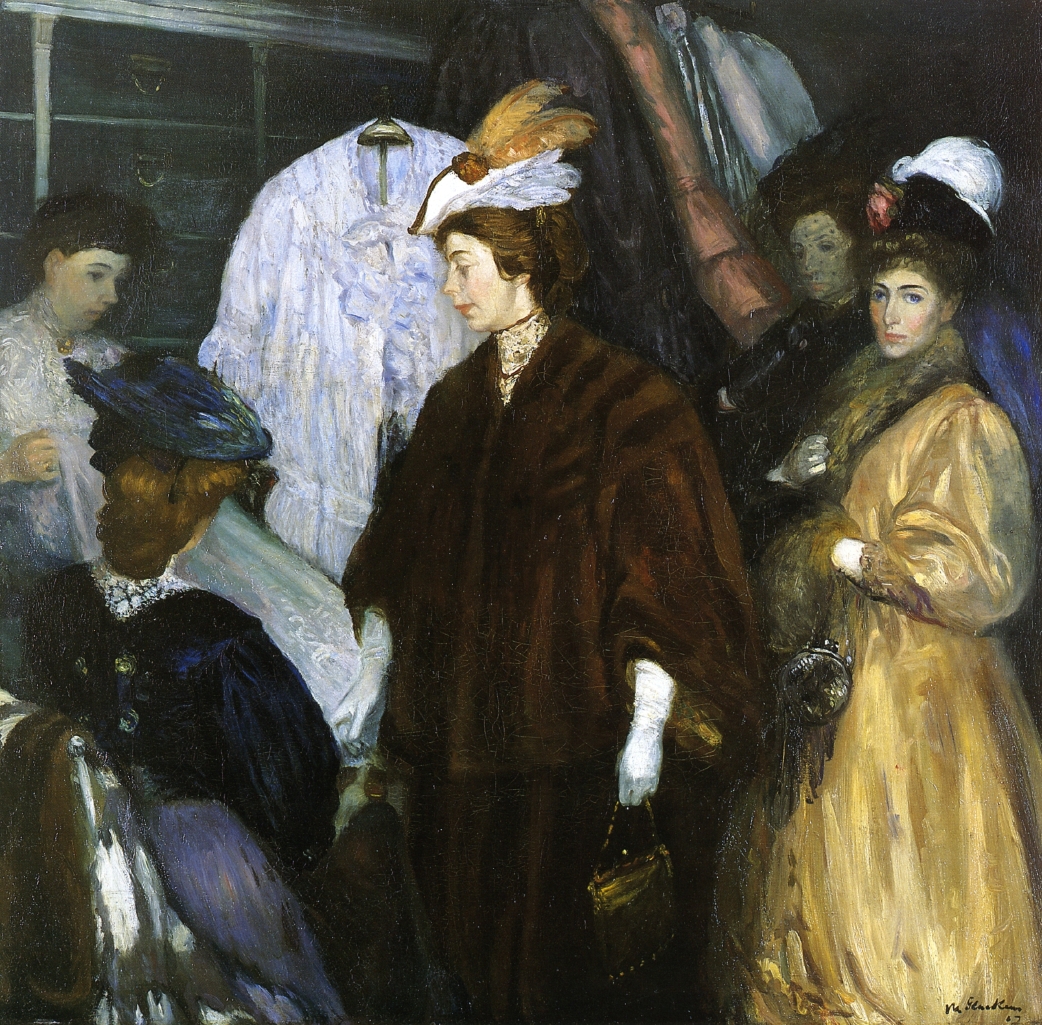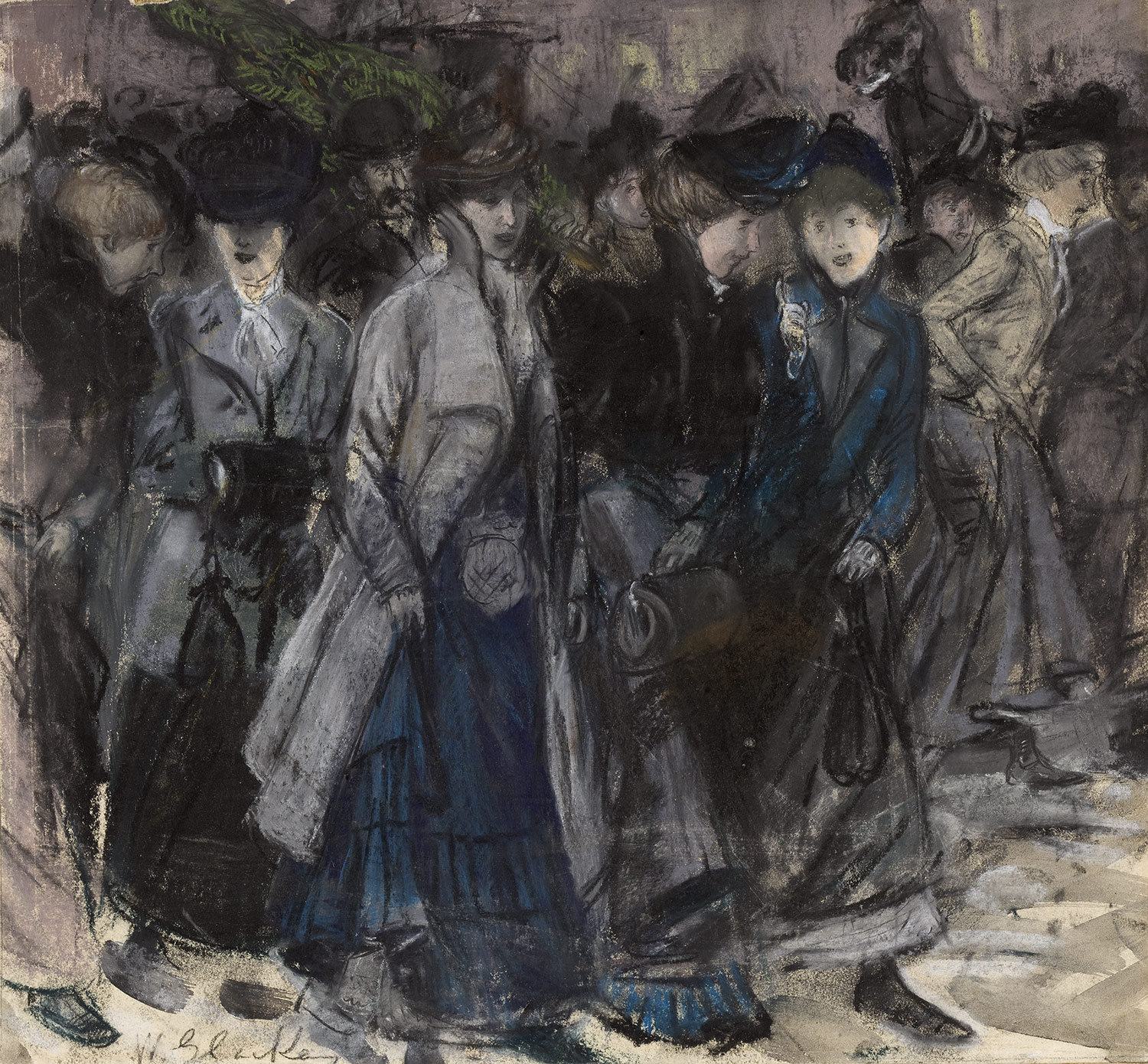The Barnes Foundation, Philadelphia
November 8, 2014–February 2, 2015Previous Venues:
Nova Southeastern University’s Museum of Art, Fort Lauderdale, Florida, February 23–June 1, 2014
Parrish Art Museum, Water Mill, New York, July 20–October 13, 2014
The first comprehensive survey of William Glackens in nearly half a century, this exhibition brings together more than 90 works from public and private collections throughout the United States. William Glackens presents key works from each decade of Glackens’s long career, revealing his absorption of French modernism in his attempt to push American painting forward. Several important canvases and works on paper will be on view for the first time.
A Philadelphia native, Glackens (1870–1938) studied at the Pennsylvania Academy of the Fine Arts. There, and as an artist for the Philadelphia Press, he became friends with Robert Henri, George Luks, Everett Shinn, and John Sloan, the core of the group that later formed “The Eight” in reaction to the National Academy of Design’s hidebound exhibition policies. The group exhibited together only once, in 1908, creating the opening wedge in the struggle to democratize the process by which artists could show and sell their work.
The exhibition at the Barnes Foundation reunites under one roof for the first time since 1908 six of the seven works that Glackens exhibited in The Eight’s show. One of the works, Race Track (1908–1909), is on view in the Barnes’s collection gallery (Room 12); the location of the seventh work is unknown.

At Mouquin’s(1905) and
Furthermore, three works from the 1908 exhibition—At Mouquin’s (1905) from the Art Institute of Chicago,
The Shoppers (1907-08) from the Chrysler Museum of Art, Norfolk, Va., and
In the Buen Retiro (1906), from the Ted Slavin Collection
—are among a group of seven significant works not shown at the other venues of William Glackens.
The remaining works are:
Chateau Thierry and
its study (1906), from the Huntington Library, Art Collections, and Botanical Gardens, San Marino, Calif.;
Shop Girls (1900), from the Metropolitan Museum of Art, New York; and
Bathers at Bellport (1912), from the Phillips Collection, Washington, DC.
Also in the Exhibition:

The Soda Fountain (1935).

William Glackens, Cape Cod Pier, 1908, oil on canvas, 26 in. x 32 in. NSU Museum of Art Fort Lauderdale, Gift of anonymous donor.

William James Glackens (American, 1870–1938), Armenian Girl, 1916. Oil on canvas, 32 x 26 inches (81.2 x 66 cm). The Barnes Foundation, Philadelphia and Merion, PA, BF176

At Mouquin’s(1905) and
Furthermore, three works from the 1908 exhibition—At Mouquin’s (1905) from the Art Institute of Chicago,
The Shoppers (1907-08) from the Chrysler Museum of Art, Norfolk, Va., and
In the Buen Retiro (1906), from the Ted Slavin Collection
—are among a group of seven significant works not shown at the other venues of William Glackens.
The remaining works are:
Chateau Thierry and
its study (1906), from the Huntington Library, Art Collections, and Botanical Gardens, San Marino, Calif.;
Shop Girls (1900), from the Metropolitan Museum of Art, New York; and
Bathers at Bellport (1912), from the Phillips Collection, Washington, DC.
Also in the Exhibition:

The Soda Fountain (1935).

William Glackens, Cape Cod Pier, 1908, oil on canvas, 26 in. x 32 in. NSU Museum of Art Fort Lauderdale, Gift of anonymous donor.

William James Glackens (American, 1870–1938), Armenian Girl, 1916. Oil on canvas, 32 x 26 inches (81.2 x 66 cm). The Barnes Foundation, Philadelphia and Merion, PA, BF176
Glackens was a boyhood friend of Albert C. Barnes (1872–1951), the Philadelphia-born pharmaceutical entrepreneur, self-made millionaire, art collector, and creator of the Barnes Foundation. They knew each other from Philadelphia’s prestigious Central High School, and when they renewed their friendship in 1911, Glackens guided Barnes toward an appreciation of modern French painting. In early 1912, Barnes wrote to Glackens: “Dear Butts, I want to buy some good modern paintings. Can I see you on Tuesday next in New York to talk about it?”
The following month, with $20,000 from Barnes in his pocket, the artist traveled to Paris on a buying trip and returned with 33 paintings, among them works by Pierre Bonnard, Paul Cézanne, Maurice Denis, Vincent van Gogh, Pablo Picasso, Camille Pissarro, and Pierre-Auguste Renoir. These purchases became the cornerstone of Barnes’s fabled collection. The two men remained close, and Barnes became his loyal and most important patron. Barnes found Glackens indispensable, stating in 1915, “The most valuable single educational factor to me has been my frequent association with a life-long friend who combines greatness as an artist with a big man’s mind.”
Curated by writer and art historian Avis Berman and co-organized by the Barnes Foundation, the Parrish Art Museum, Water Mill, NY, and the Nova Southeastern University Museum of Art, Fort Lauderdale, Fla. At the Barnes Foundation, the exhibition was coordinated by Judith F. Dolkart, the Mary Stripp & R. Crosby Kemper Director of the Addison Gallery of American Art at Phillips Academy, Andover, MA, and former deputy director of art and archival collections and Gund Family Chief Curator at the Barnes.
More Glackens info and images
More Glackens info and images
About the Barnes Foundation
The Barnes Foundation was established by Albert C. Barnes in 1922 to "promote the advancement of education and the appreciation of the fine arts and horticulture." The Barnes has one of the finest collections of post-impressionist and early modern paintings, with extensive holdings by Pierre-Auguste Renoir, Paul Cézanne, Henri Matisse, Pablo Picasso, Henri Rousseau, Amedeo Modigliani, Chaim Soutine, and Giorgio de Chirico; American masters Charles Demuth, William Glackens, Horace Pippin, and Maurice Prendergast; old master paintings; African sculpture; Native American ceramics, jewelry and textiles; American paintings and decorative arts; and antiquities from the Mediterranean and Asia.
The Barnes Foundation's Art and Aesthetics programs engage diverse audiences. These programs, on-site, online, and in Philadelphia communities, advance the mission through progressive interdisciplinary teaching and learning.
In May 2012, the Barnes Foundation opened a new facility on the Benjamin Franklin Parkway designed by Tod Williams Billie Tsien Architects. The Philadelphia campus is home to the Foundation’s world-famous art collection and changing exhibitions in its 5,000-square-foot Roberts Gallery.
The Barnes Arboretum in Merion contains more than 2,000 varieties of trees and woody plants, including 31 state champion trees. Founded in the 1880s by Joseph Lapsley Wilson and expanded under the direction of Laura Barnes, the collection includes a fern-leaf beech (Fagus sylvatica 'Laciniata'), a dove tree (Davidia involucrata), a monkey-puzzle tree (Araucaria araucana), and a redwood (Sequoia sempervirens). Other important living collections include lilacs, peonies, Stewartias, and magnolias. Inaugurated in 1940 by Mrs. Barnes, the Arboretum School offers a comprehensive three-year certificate course in botanical science, horticultural practice, garden aesthetics, and design. The Foundation’s archives are also located at the Merion campus.

_1906.jpg)

